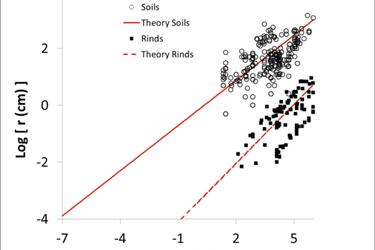Why do rates of rock weathering slow over time?
May 28, 2015

May 28, 2015
Physics professor Dr. Allen Hunt recently published his work, which sought to answer the important question of "why rates of soil development and rock weathering slow over time".
New research by Dr. Hunt, published in the Vadose Zone Journal, answers this question in terms of slowed solute transport, explaining the role of transport limitations on weathering. The depth of the chemically weathered layer on basalt surfaces was found using three known parameters: a fundamental length scale, equal to a pore size; a fundamental time scale (the time for water to flow through such a pore); and an
Finding the right college means finding the right fit. See all that the College of Science and Math has to offer by visiting campus.